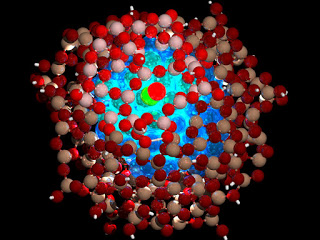If you’re one of the many people who forget to floss, you may have a lucky break coming your way in the near future: nanoparticles. These tiny substances – composed of compounds like calcium phosphate and silica for oral health purposes – could revolutionize the way we look at teeth cleaning.
According to an article in Science Magazine, when researchers at University of Rochester and University of Pennsylvania developed drug-releasing nanoparticles, they noted that they’re “engineered with a positively-charged outer segment to bind to negatively-charged sites on plaque biofilms and tooth enamel, effectively anchoring the particles in place.”
In essence, the nanoparticles can attack the plaque. Imagine if you had way to keep plaque from building up and causing cavities that did not involve brushing and flossing daily?
These particles have benefits outside of their convenience in application. In a head-to-head study against a free drug that wasn’t bound to nanoparticles – “the drug-loaded nanoparticles were four times more powerful in destroying the bugs (Streptococcus mutans, in this study) than the free drug alone. They attributed this fact to the ability of the nanoparticles to adhere and deliver the drug in a controlled-release fashion, targeting [specific] sites of bacterial growth (biofilms) to deliver higher concentrations locally.”
Don’t throw away your old brush just yet though. As with all new, innovative products – there’s a catch. Research is still limited to the particles benefits, and there are a number of unanswered questions regarding the safety of ingesting these particles – or having them congregate in areas outside of the mouth. Many are worried that, due to their tiny size, the nanoparticles may end up attaching instead to other organs once swallowed. What’s to stop them from attaching to biofilm elsewhere in the body, and combatting the good bacteria?
At this stage of research and development it is believed that these tiny robot cleaners will first infiltrate the world of traditional dentistry – cavity filling, localized medicine delivery and dental implants – but eventually the scope of technology will soon broaden. Researchers hope the innovation will include “Taking high quality images of your mouth with lower levels of radiation,” and even the “delivering local anesthesia (no more long needles!) or providing painless, quick orthodontic services.”
In an effort to provide Artistic Dental patients with the latest treatments in dentistry, we are always looking at what is in development. Nanoparticle research is still in its infancy, but we will be watching and learning what we can. In the meantime, we continue to do all we can to provide our patients with a clear understanding of their treatment options and the best oral care available.
